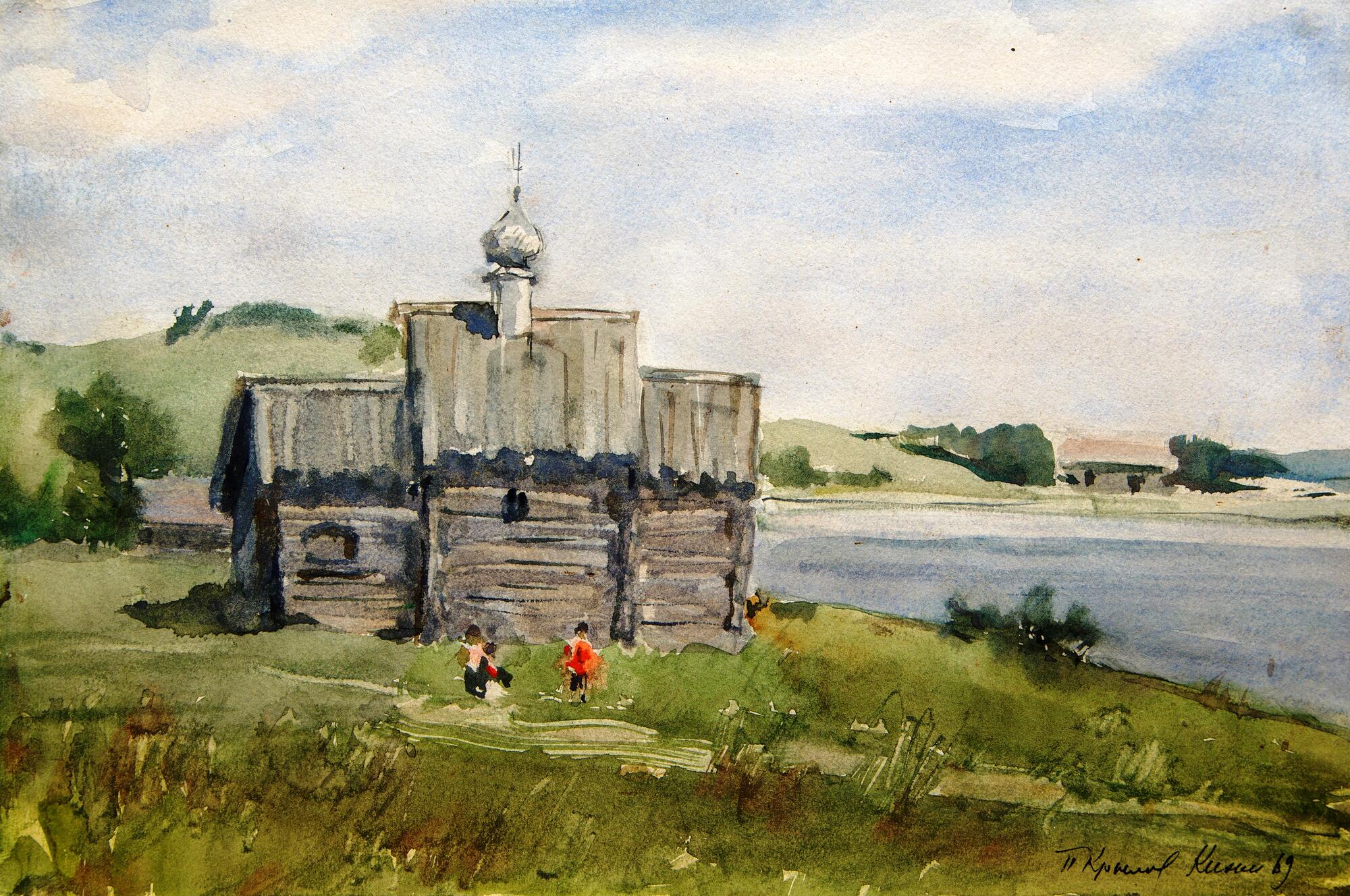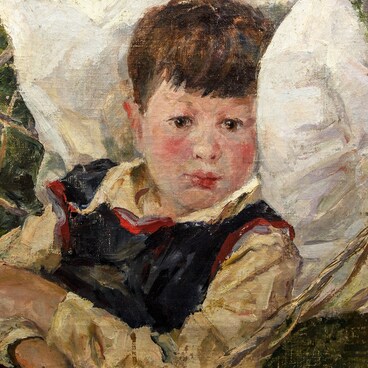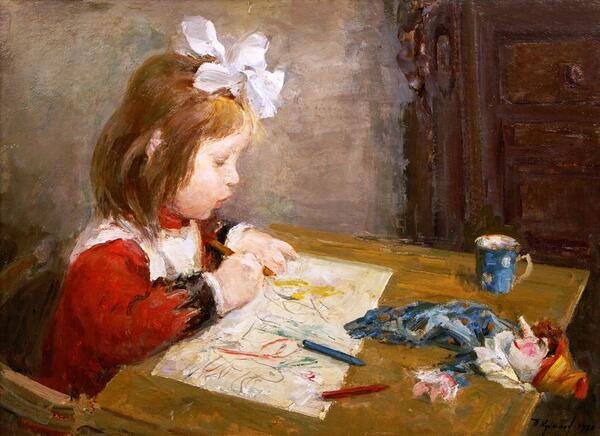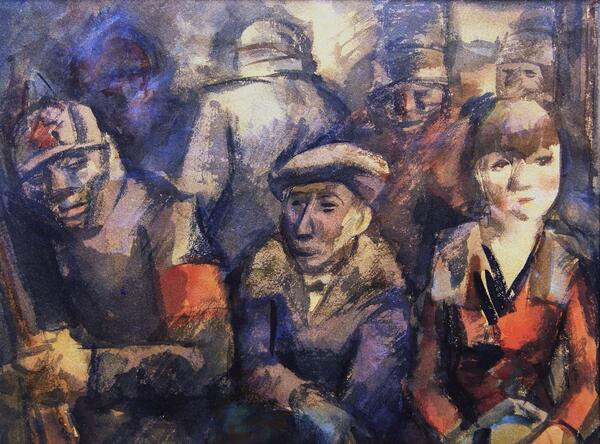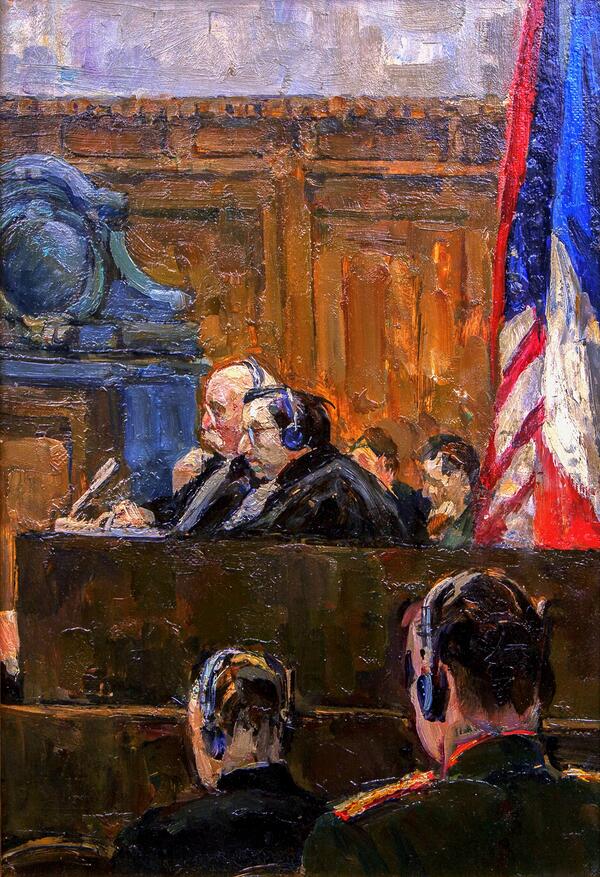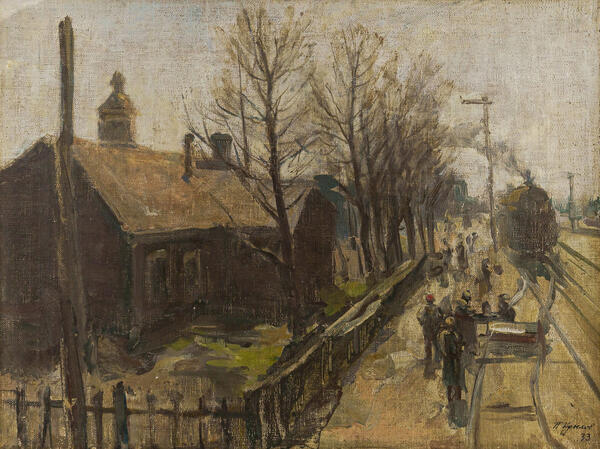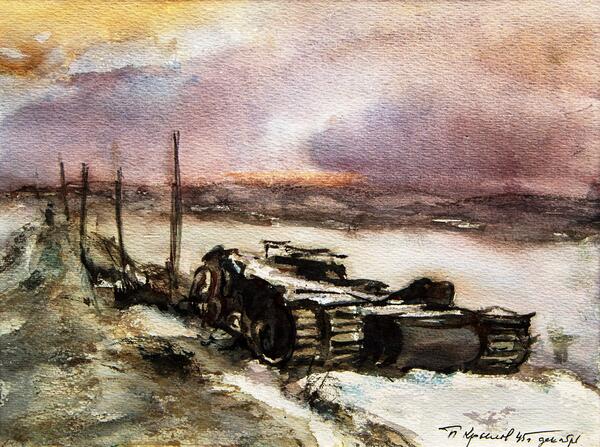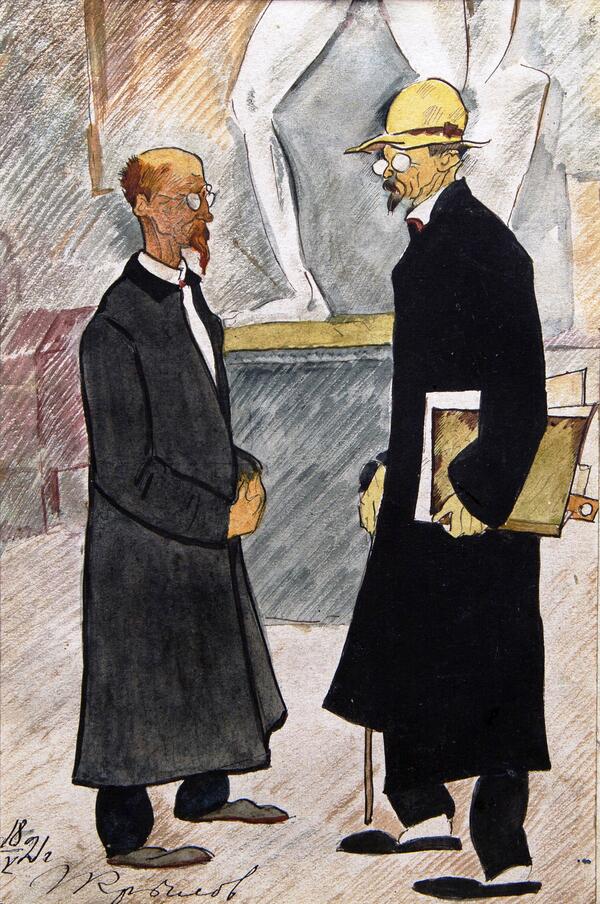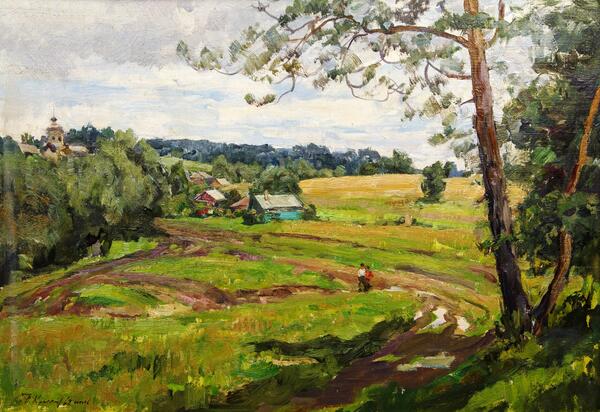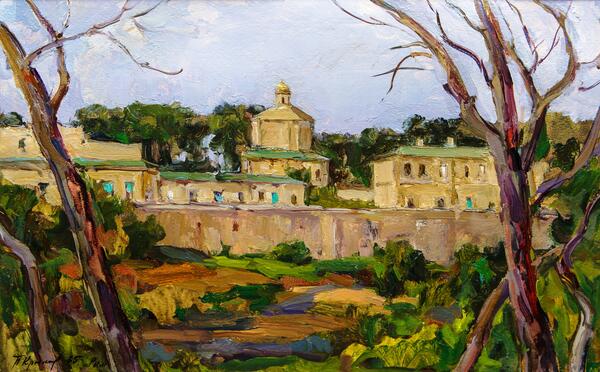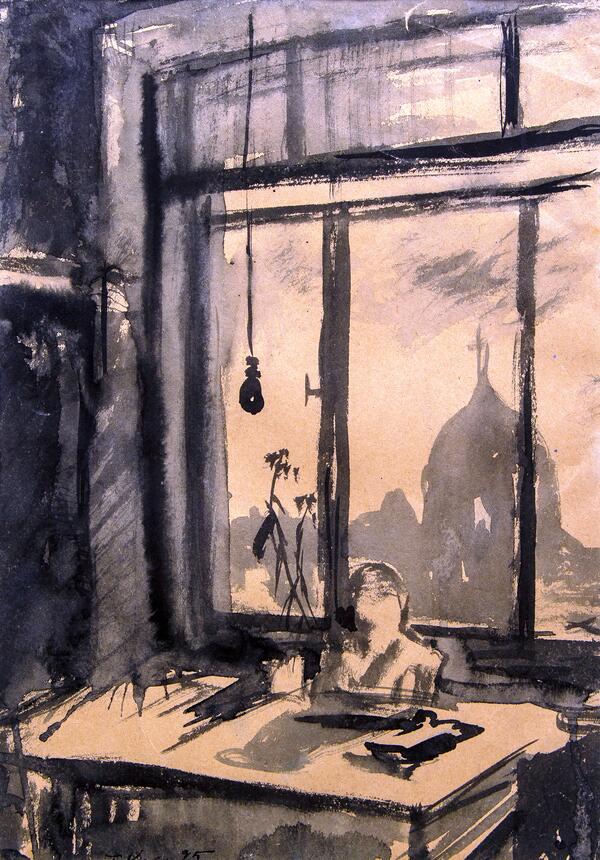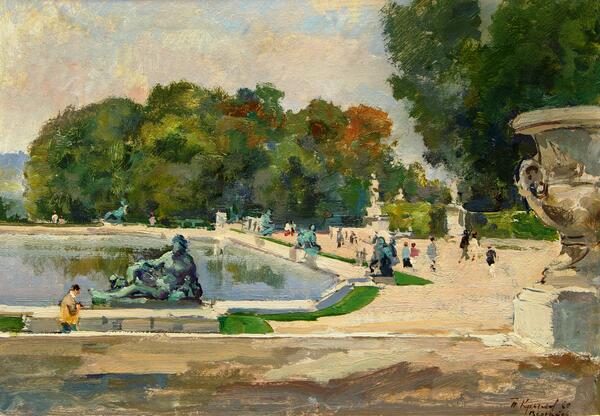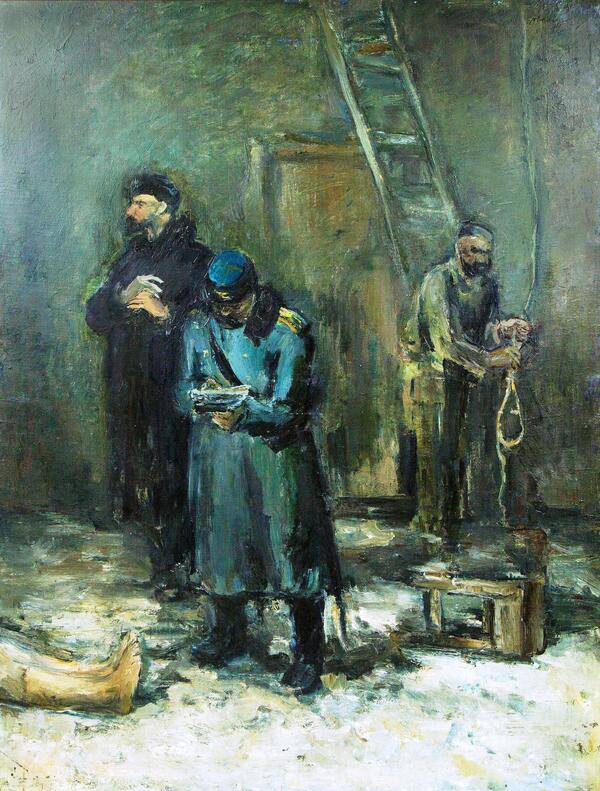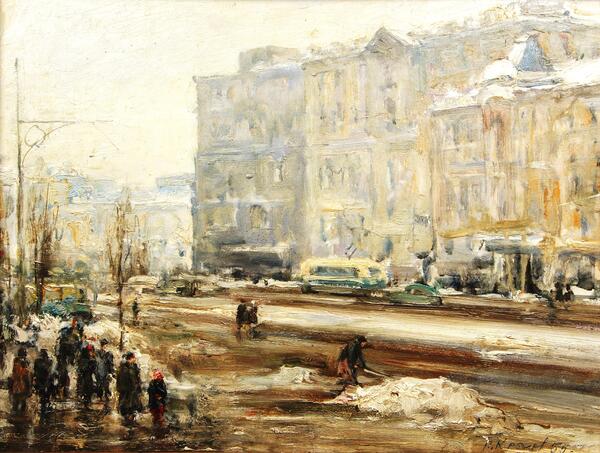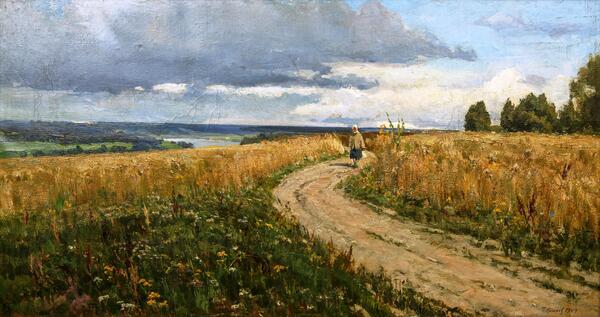The soviet artist Porfiry Krylov mastered various artistic techniques: oil, watercolor, pencil. His watercolor landscapes always accurately convey the mood and details of nature. The painting “Kizhi” is dedicated to one of the largest open-air museums in Russia.
The ancient architectural complex on Kizhi Island in Lake Onega is a recognized masterpiece of wooden architecture of the Russian North. Kizhi Pogost is included in the list of UNESCO World Heritage sites as a unique artistic achievement, the buildings of which are in harmony with the surrounding landscape and as an exceptional example of wooden architecture.
Since 1960, monuments of wooden architecture of the 15th–20th centuries have been brought to Kizhi Island from different parts from beyond Lake Onega. Currently, the reserve includes 89 architectural monuments — these are carved churches, chapels, peasant huts, baths, mills and other buildings.
Porfiry Krylov depicted one of the temples of the Kizhi Pogost — the Church of the Resurrection of Lazarus. It was transported to Kizhi Island from the southeastern shore of Lake Onega, from Muromsky Holy Dormition Monastery.
The Church of the Resurrection of Lazarus is a small wooden church, about seven meters high. It consists of three granaries of different sizes, which is clearly visible from the angle from which Porfiry Krylov worked. Despite its modest facades, the Church of the Resurrection of Lazarus is unique — it is considered one of the oldest wooden Orthodox churches not only in the exhibition of the Kizhi Museum but also in all of Russia.
Several copies of the document have been preserved, which researchers call the “Testament of Lazarus of Murom” or “The Tale of Murom Island”. It says that the church was built in the 14th century by the founder of the monastery, monk Lazarus Abba after the evangelical miracle — the Resurrection of Lazarus, the holy righteous friend of God.
According to the Gospel,
young Lazarus of Bethany died of an illness and on the fourth day after the
man’s death, he was resurrected by Jesus, who did this in front of his
disciples so that they would believe in the power of the Lord. It was after
this miracle that the Pharisees became adamant in their plan to destroy the
Savior.
